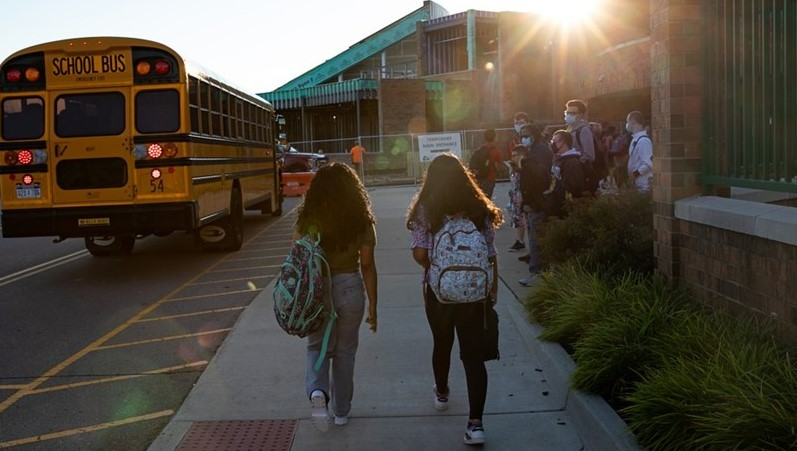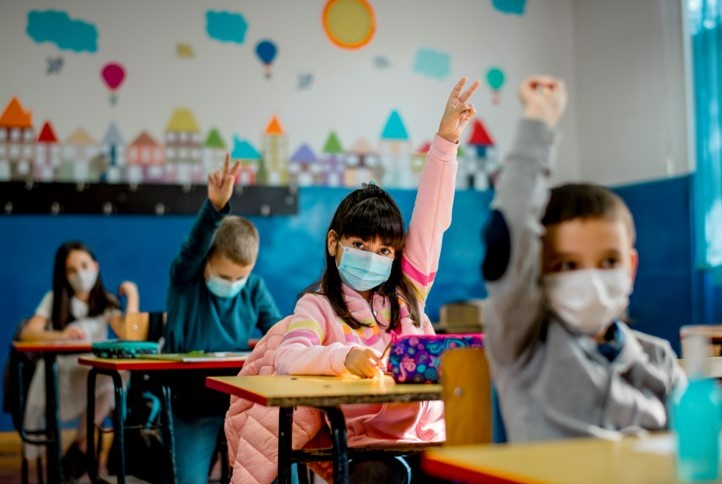
https://www.theatlantic.com/ideas/archive/2022/01/kids-masks-schools-weak-science/621133/
Author: Skye Vanlanduyt
In her article, writer, Liann Herder discusses several students’ worries in regard to the return of in-person learning for students with disabilities. Though devastating, the Covid-19 Pandemic, according to Herder “presented a strange silver lining-classes, conferences, meetings, and socialization moved online. This sudden adjustment to asynchronous, virtual learning allowed many physical or mental disabilities open access to their education.” Thus, the shift to virtual learning made education more inclusive and readily available to more populations of individuals, especially those with disabilities wanting to further their career and education.
As the Pandemic reaches its second year, past mandates have lifted and a new normal has emerged. Herder stated, “in August of this year”, “the CDC released its newest guidance-which included no longer encouraging schools and other similar institutions to run tests on asymptomatic individuals.” This new guideline has resulted in a negative consequence for some with disabilities. Herder says, “with academia’s push to return to in-person, often at the expense of online flexibility that benefitted many in the disabled community, many worry asynchronous learning options will disappear even while Covid continues to spread.” Although an online option is available for students who go to UMKC, many universities do not have this accommodation, nor is it guaranteed for universities such as UMKC who still offer the asynchronous option.

Photo: Getty Images https://www.yalemedicine.org/news/mask-mandates-ending-in-schools
Many students from the disability community are sharing their beliefs, frustrations, and opinions about the new measure which is greatly affecting the disability community. In Herder’s article, Doctoral Student in Disability Studies, Helen Rottier says the guidelines have “enabled institutions, especially colleges and universities to make rules based on their own motivators, whether that’s campus culture or politics-what they think will get students to enroll and pay for classes.” These University motives and decisions do not always have the disabled community in mind. Rottier goes on to say she believes “removing the remote option that we have demonstrated is possible, is just a slap in the face to disabled people, who were for the first time able to attend big disability events to engage in educational events.” If universities chose to remove the asynchronous option, many students with disabilities and chronic illness will be once more excluded from educational opportunities.
Javin D’Souza, another student from UIC’s Disability Cultural Center says with the lifted masked mandate, “individual choice is a very bad public health policy.” Mask enforcement is dwindling, especially as D’Souza says it now “depends on the institution.” The risk that comes with making health decisions an individual choice is that it still puts students with disabilities and chronic illness at risk if they are to choose to eliminate asynchronous learning.
Herder’s article only gives one solution for those who share anxiety about in person learning.
For students with disabilities, the fight to keep asynchronous an option may serve as an opportunity for students in and outside of the disability community to band together to speak out and advocate for their needs to continue being accommodated.
Tiffany Yu, CEO and founder of Diversability and Arrielle Dance has written an article on how to make events more accessible for those with disabilities, which has been featured in the World Institute on Disabilities. In conjunction with students returning to the classroom and fears of asynchronous learning disappearing, some of Yu’s tips and insight may be helpful for educators and students. Much like Herder’s article, Yu also believes “with heightened awareness of diversity, equity, and inclusion (DEI), accessibility needs should be centered in those considerations.” The considerations Yu provides in her article are simple but may make a huge difference for those who need certain accommodations. One option she suggests, is to include “a written form so students and participants of a gathering can share what would make them most comfortable” on in-person days.
By adding this extra step, educators and speakers will be able to better gage what accommodations such as “taking breaks, table placement, and seating” they may need to address beforehand. Yu also includes that requiring masks at events and making them outdoors as often as possible is another option. However, with the new regulations this recommendation may be more difficult to implement, especially as universities lift guidelines and return to in-person learning.
Although anxieties are high with the return to in-person learning, Herder and Yu indicate there are many ways universities can accommodate students with disabilities who must return to the classroom. That being said, both articles conclude it is up to the students and educators to ensure those accommodations are implemented and available.


